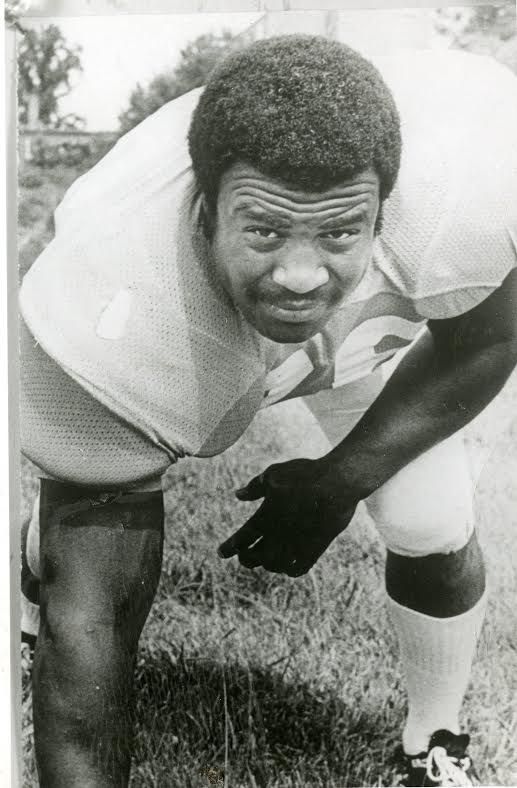Blue Bears had nation’s best small-college defense 40 years ago
Published 12:00 am Wednesday, August 6, 2014
SALISBURY — The paddle that Livingstone head football coach Baxter Holman Jr. carried everywhere he went — one of those long-handled, old-school principal’s paddles, not a Ping Pong paddle — symbolized a different era.
That paddle would help the Livingstone Blue Bears develop the nation’s top Division II defense in the mid-1970s. For three years, the Blue Bears were a stone wall when they didn’t have the ball.
“That paddle had holes in it,” remembers Devore Holman, Davie County’s football coach and the late Baxter Holman’s nephew. “When one of his offensive lineman jumped offsides, my uncle would just wear his rear end out with that paddle. He was old school. He was a disciplinarian and his players knew it was coming if they messed up. Not many guys jumped offsides.”
Baxter Holman Jr. came up the hard way, captained the North Carolina Central football team and went to work teaching and coaching at segregated black schools in Winston-Salem in the 1960s. When the Winston schools integrated, Holman coached blacks and whites at Mount Tabor, won over a community and won the 1970 coach of the year award.
That led to college offers, and a stint as an assistant coach at Winston-Salem State was the springboard to the Livingstone head job. Holman took over in Salisbury in the summer of 1973. Livingstone had gone 2-8 in 1972 and had allowed 42 points to Elizabeth City State, 47 to N.C. Central and 50 to Winston-Salem State.
Holman’s five-man staff went to work, and those five men included Holman, who was also teaching classes, and a scout. The key to Holman’s staff was defensive coordinator Fletcher Jones. Jones had been a quarterback at Salisbury’s J.C. Price High and a running back/punter at Benedict College in Columbia, S.C., but somewhere along the way, Jones had become a defensive wizard. Jones started assisting at Livingstone in 1959, and in 1960, the Blue Bears posted eight shutouts, although some of the opponents were lightweights — teams such as Morristown Junior College, Kittrell and Voorhees JC.
When Holman and Jones came together in 1973, the first year of NCAA D-II football, Livingstone recaptured that defensive magic.
“I used to get to travel around with those teams,” Devore Holman said. “I can still remember the names.”
The most notable name that Devore and everyone else remembers is Johnny Miller. Livingstone played a 5-2-4 defense, with Miller as the anchor. He was a 243-pound, run-stuffing middle guard. Miller was powerful and he ran a 4.8 40 in full pads.
Livingstone posted four shutouts in 1973 — wins over Bowie State, Shaw and Knoxville, plus a scoreless tie with Federal City, and turned around 2-8 into 8-2-1. The losses were to rival J.C. Smith and to Virginia Union, which was very strong in those days.
The numbers posted by LC’s 1973 defense were staggering. In 10 games, the Blue Bears alowed 1,149 yards in 548 plays — basically 2 yards per play. In yards allowed per game, Livingstone ranked No. 1 in D-II.
Livingstone allowed 1.4 yards per rush — 475 yards on 358 attempts. In rushing defense, the Blue Bears were second nationally to Alcorn A&M.
In 1974, Holman and Jones set their goals higher — the CIAA championship.
Livingstone had added offense with quarterback Randy Nichols, who had a five-TD game that season.
There was a good receiver in Sam Branch, dependable backs in William Scales and Calvin Eley and a strong kicker in Andrew Cooney. The defense remained rugged. Henry Caldwell, James Baker, Cecil Copeland, David Smith and Miller shined upfront. Larry Lee and Stephen Blanton were menacing linebackers. Hard-hitting safeties Lawrence McDuffie and Ronald McCleave were All-CIAA types, and freshman corners John Stoutamire and David Walker played better than their age.
Livingstone chased a powerful Norfolk State team in the CIAA standings that whole season, and the teams weren’t scheduled to play each other. As the calendar turned to November, Livingstone and Norfolk State were still unbeaten in the league.
Livingstone was tied 0-0 at halftime with St. Paul’s but finally grabbed the lead on a touchdown scored by East Rowan product Kenny Sifford. The Blue Bears’ 30-0 win included 10 points in five seconds on a field goal by Cooney and a pick-6 by McCleave.
St. Paul’s never crossed midfield in that game and made only three first downs.
The homecoming game with Shaw followed, and Livingstone’s defense was devastating. Shaw completed three passes that lost yardage and also had minus yards on 10 running plays. A fumble gave Shaw six points, but Livingstone, which got a 44-yard punt return from Salisbury High grad Powell Adkins, won 31-6.
That set up a home conest with Virginia Union that the Post hyped as the biggest game in Livingstone history. Livingstone was leading D-II in defense, while Virgina Union ranked second.
It had been declared that if Livingstone and Norfolk State, which had beaten Virginia Union, both finished unbeaten in the CIAA, the league’s coaches would vote on which team would represent the CIAA in the Gate City Classic in Atlanta against SIAC champion Tuskegee.
Even the normally understated Holman declared to the Post that “all the marbles are in one bag now.”
Unfortunately, it never came down to a vote for the Blue Bears. They threw a pick-6 in the opening minute against Virginia Union and things snoowballed from there.
Momentum is everything, and when the smoke cleared, LC’s offensive turnovers had handed VU 28 points and Virginia Union had won by a shocking 41-0.
Still, Livingstone went out the next week and won to finish 9-2 and 5-1 in the CIAA for the best season the school had enjoyed in modern times. Holman was named CIAA Coach of the Year.
Despite the Virginia Union debacle, Livingstone, again led Division II in total defense (120.5 yards per game) and rushing defense (53.0 yards per game) and ranked fifth nationally in pass defense while making 18 interceptions. Livingstone had won a 3-2 game with Bowie State almost exclusviely with defense.
Livingstone’s defense had faced 619 plays and had allowed 1,326 yards (2.1 yards per play), In 418 rushing attempts, Livingstone had allowed just 583 yards (1.4 yards per carry).
The most staggering stat was that Livingstone would return its top 22 defensive players — all 11 starters and their top backups — for the 1975 season. Eight offensive starters would also return. On paper, a 1975 CIAA title seemed like a sure thing.
The defense was outstanding again in 1975, but it didn’t happen. The Blue Bears lost low-scoring games to Fayetteville State and Johnson C. Smith and fell again to nemesis Virginia Union.
The good news was that in the 1973-75 seasons, Livingstone came out of nowhere to go 24-7-2.
Miller was drafted by the San Francisco 49ers in 1976 and played in a handful of games in the NFL in 1977. Unfortunately, they don’t have middle guards in the NFL, and Miller wasn’t successful making the transition to linebacker.
Still, as the Blue Bears prepare to start a new season, they can look back with considerable pride at the school’s national defense champions of 40 years ago and All-American Johnny Miller.
Devore Holman will also take some of the lessons he learned from his uncle into Davie’s new season.
“I had great role models growing up,” he said. “When I got into trouble, I got whipped by everyone involved. I didn’t always understand it then, but I do now. I appreciate all that tough-love I got.”






